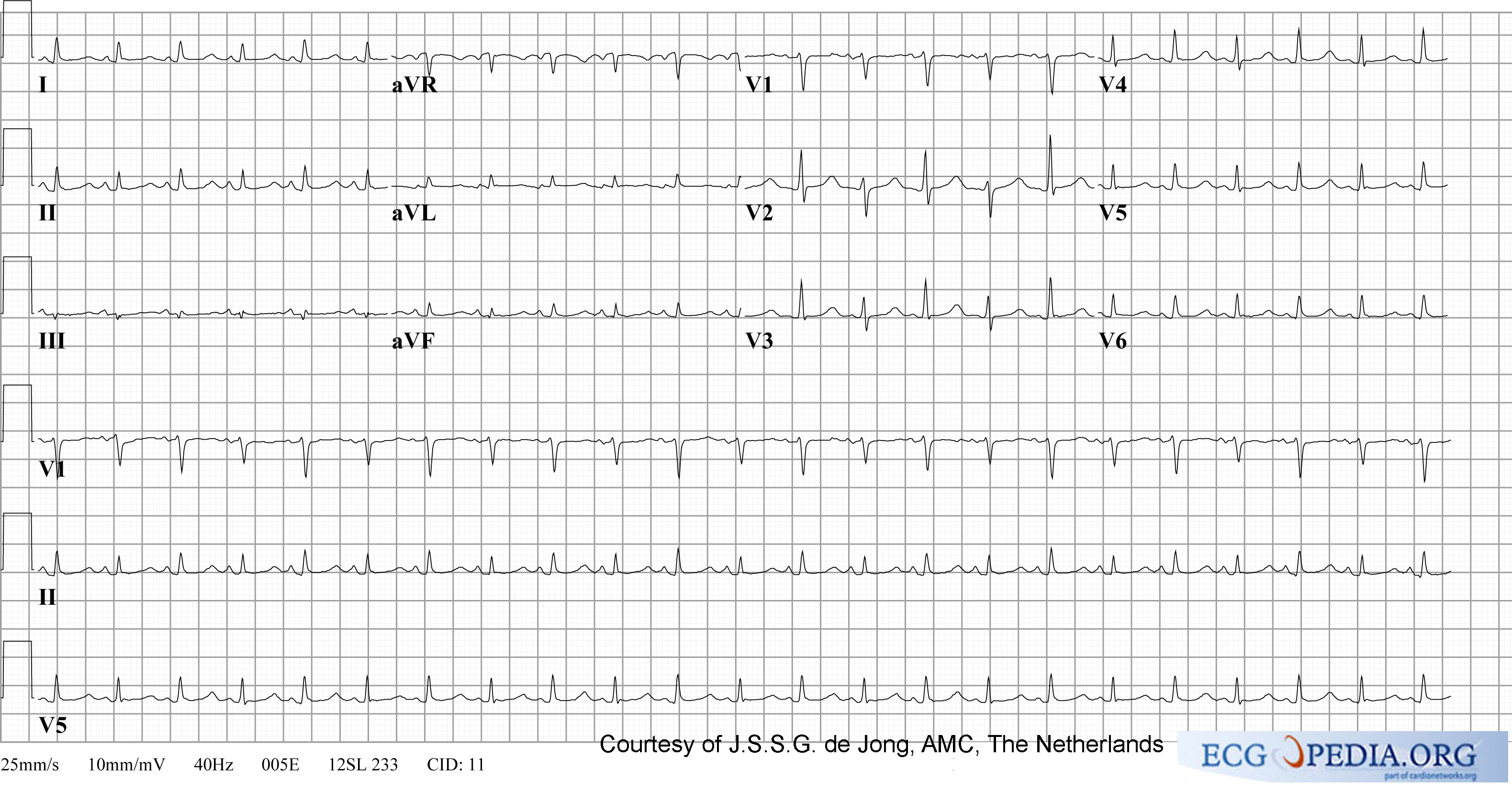HIV AIDS electrocardiogram: Difference between revisions
m (Alejandro Lemor moved page AIDS electrocardiogram to HIV AIDS electrocardiogram) |
|||
| Line 12: | Line 12: | ||
*ST segment depression | *ST segment depression | ||
*T wave inversion<ref name="pmid18050781">{{cite journal| author=Okeahialam BN, Sani MU| title=Heart disease in HIV/AIDS. How much is due to cachexia? | journal=Afr J Med Med Sci | year= 2006 | volume= 35 Suppl | issue= | pages= 99-102 | pmid=18050781 | doi= | pmc= | url=http://www.ncbi.nlm.nih.gov/entrez/eutils/elink.fcgi?dbfrom=pubmed&tool=sumsearch.org/cite&retmode=ref&cmd=prlinks&id=18050781 }} </ref> | *T wave inversion<ref name="pmid18050781">{{cite journal| author=Okeahialam BN, Sani MU| title=Heart disease in HIV/AIDS. How much is due to cachexia? | journal=Afr J Med Med Sci | year= 2006 | volume= 35 Suppl | issue= | pages= 99-102 | pmid=18050781 | doi= | pmc= | url=http://www.ncbi.nlm.nih.gov/entrez/eutils/elink.fcgi?dbfrom=pubmed&tool=sumsearch.org/cite&retmode=ref&cmd=prlinks&id=18050781 }} </ref> | ||
Shown below is an EKG with the presence of micro-voltage and [[electrical alternans]] suggesting [[pericardial effusion]] and [[cardiac tamponade]]. | |||
[[Image:PulsusAlternans.jpg|center|500px|Image obtained courtesy of ECGpedia, http://en.ecgpedia.org]] | |||
==References== | ==References== | ||
Revision as of 14:00, 21 October 2014
|
AIDS Microchapters |
|
Diagnosis |
|
Treatment |
|
Case Studies |
|
HIV AIDS electrocardiogram On the Web |
|
American Roentgen Ray Society Images of HIV AIDS electrocardiogram |
|
Risk calculators and risk factors for HIV AIDS electrocardiogram |
Editor-In-Chief: C. Michael Gibson, M.S., M.D. [1]; Associate Editors-in-Chief: Ujjwal Rastogi, MBBS [2]; Ammu Susheela, M.D. [3]
Overview
The pericardium is frequently involved in HIV infections. Also medications used in AIDS therapy can cause EKG changes. Since the cardiac complications in the initial phases are not very obvious, periodic electrocardiogram monitoring is indicated in HIV positive individuals. [1]
Electrocardiogram
Studies have shown that from a negative HIV status to full blown AIDS, the following changes were observed in patients.
- Increased heart rate
- Increased corrected QT interval
- ST segment depression
- T wave inversion[2]
Shown below is an EKG with the presence of micro-voltage and electrical alternans suggesting pericardial effusion and cardiac tamponade.

References
- ↑ Milei J, Grana D, Fernández Alonso G, Matturri L (1998). "Cardiac involvement in acquired immunodeficiency syndrome--a review to push action. The Committee for the Study of Cardiac Involvement in AIDS". Clin Cardiol. 21 (7): 465–72. PMID 9669054.
- ↑ Okeahialam BN, Sani MU (2006). "Heart disease in HIV/AIDS. How much is due to cachexia?". Afr J Med Med Sci. 35 Suppl: 99–102. PMID 18050781.